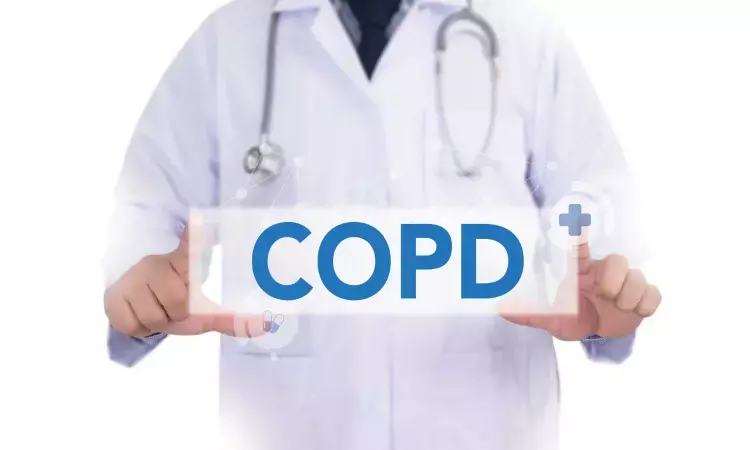- Home
- Medical news & Guidelines
- Anesthesiology
- Cardiology and CTVS
- Critical Care
- Dentistry
- Dermatology
- Diabetes and Endocrinology
- ENT
- Gastroenterology
- Medicine
- Nephrology
- Neurology
- Obstretics-Gynaecology
- Oncology
- Ophthalmology
- Orthopaedics
- Pediatrics-Neonatology
- Psychiatry
- Pulmonology
- Radiology
- Surgery
- Urology
- Laboratory Medicine
- Diet
- Nursing
- Paramedical
- Physiotherapy
- Health news
- Fact Check
- Bone Health Fact Check
- Brain Health Fact Check
- Cancer Related Fact Check
- Child Care Fact Check
- Dental and oral health fact check
- Diabetes and metabolic health fact check
- Diet and Nutrition Fact Check
- Eye and ENT Care Fact Check
- Fitness fact check
- Gut health fact check
- Heart health fact check
- Kidney health fact check
- Medical education fact check
- Men's health fact check
- Respiratory fact check
- Skin and hair care fact check
- Vaccine and Immunization fact check
- Women's health fact check
- AYUSH
- State News
- Andaman and Nicobar Islands
- Andhra Pradesh
- Arunachal Pradesh
- Assam
- Bihar
- Chandigarh
- Chattisgarh
- Dadra and Nagar Haveli
- Daman and Diu
- Delhi
- Goa
- Gujarat
- Haryana
- Himachal Pradesh
- Jammu & Kashmir
- Jharkhand
- Karnataka
- Kerala
- Ladakh
- Lakshadweep
- Madhya Pradesh
- Maharashtra
- Manipur
- Meghalaya
- Mizoram
- Nagaland
- Odisha
- Puducherry
- Punjab
- Rajasthan
- Sikkim
- Tamil Nadu
- Telangana
- Tripura
- Uttar Pradesh
- Uttrakhand
- West Bengal
- Medical Education
- Industry
High-levels of TyG index increases risk of respiratory failure in COPD patients: Study

A new study published in the journal of BMC Pulmonary Medicine showed that a high-level Triglyceride-Glucose (TyG) index and the probability of respiratory failure (RF) incidence in patients with chronic obstructive lung disease (COPD) are mildly correlated, suggesting that using the TyG index to gauge the severity of COPD patients has potential futures.
One prominent group of long-lasting and progressive respiratory conditions with significant rates of disability and mortality is chronic obstructive pulmonary disease. According to data from the WHO, COPD is the third most common cause of mortality worldwide, behind stroke and ischemic heart disease.
A strong indicator of insulin resistance, the TyG index is currently used to evaluate the beginning and prognosis of a number of diseases, including ischemic stroke, chronic kidney disease, and acute coronary syndrome. It is unclear, therefore, if the TyG index may be used to evaluate the risk of RF in individuals with COPD. Investigating the relationship between the TyG index and RF risk in patients with COPD is the goal of the current investigation.
In this study, the MIMIC-IV 2.2 (The Medical Information Mart for Intensive Care IV, version 2.2) database was utilized to get COPD patients in the past. Cox proportional hazards models and restricted cubic spline (RCS) curves were used to assess the relationship between the TyG index and the likelihood of RF in individuals with COPD. Thus, to evaluate the RF risk across the quartile groups, cumulative incidence curves were produced. Ultimately, 1188 patients were chosen from Jiaxing City's First Hospital in order to externally evaluate the primary outcome's Cox modeling results.
A total of 1,232 people from the MIMIC database were included in this study. Among these people, RF occurred in 134 cases (10.9%). An one-unit increase in the TyG index was associated with a 1.821-fold increased incidence of RF in the COPD cohort, per Cox regression analysis.
Also, a higher RF risk was substantially associated with higher TyG index values. A linear relationship between the TyG index and RF risk was also indicated by RCS curve analysis (P-Nonlinear = 0.074).
Overall, the TyG index can help predict the RF risk in individuals with COPD to a certain degree. People who have higher TyG index values are more likely to develop RF. It also acts as a warning sign for longer hospital stays and higher use of invasive mechanical ventilation.
Source:
Hu, S., Zhang, Y., Cui, Z., Zhang, Y., Wang, J., Tan, X., & Chen, W. (2025). The impact of the triglyceride-glucose index on the risk of respiratory failure in patients with COPD: a study from the MIMIC database and Chinese cohorts. BMC Pulmonary Medicine, 25(1), 149. https://doi.org/10.1186/s12890-025-03597-x
Neuroscience Masters graduate
Jacinthlyn Sylvia, a Neuroscience Master's graduate from Chennai has worked extensively in deciphering the neurobiology of cognition and motor control in aging. She also has spread-out exposure to Neurosurgery from her Bachelor’s. She is currently involved in active Neuro-Oncology research. She is an upcoming neuroscientist with a fiery passion for writing. Her news cover at Medical Dialogues feature recent discoveries and updates from the healthcare and biomedical research fields. She can be reached at editorial@medicaldialogues.in
Dr Kamal Kant Kohli-MBBS, DTCD- a chest specialist with more than 30 years of practice and a flair for writing clinical articles, Dr Kamal Kant Kohli joined Medical Dialogues as a Chief Editor of Medical News. Besides writing articles, as an editor, he proofreads and verifies all the medical content published on Medical Dialogues including those coming from journals, studies,medical conferences,guidelines etc. Email: drkohli@medicaldialogues.in. Contact no. 011-43720751


